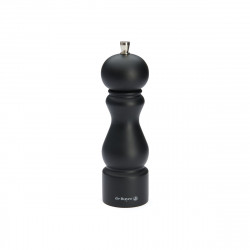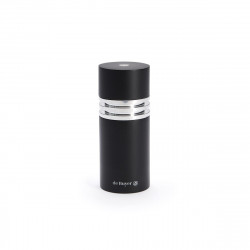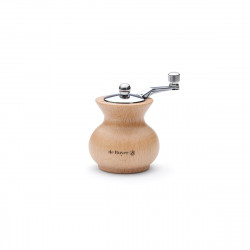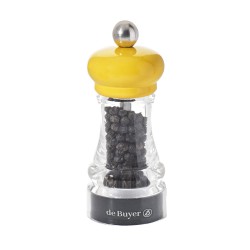-
- Our Berlingots Blends Bouquet Garni from France Fish and Seafood Bouquet Garni Cajun blend Plant-based cuisine Curry Homemade Recipe Curry Intense Homemade Recipe Thaï Red Curry Thaï Green Curry Spices Grill & Plancha Organic Provencal Herbs from Provence Four Spices Faraony Valley Ras El Hanout Traditional Recipe Zaatar Guacamole Spices Mix Gingerbread Spices Mix Coffret Assemblage Foie Gras Mulled Wine Spice Mix
- Pure Spices Berlingots Garlic from France Bear's garlic from Ain Ceylon cinnamon Organic Clove from Madagascar Organic coriander from France Cumin from India Organic turmeric from Madagascar Organic Tonka bean harvested in Guyana Organic ginger from Madagascar Nutmeg from Sri Lanka Sweet Paprika from Hungary Smoked Paprika from Hungary Ancho Rojo pepper from Mexico Bourbon Vanilla Powder – Gourmet
- Berlingot peppers Organic black pepper from Madagascar Voatsiperifery Wild Pepper Treetop pepper
- Espelette pepper Espelette pepper Ezpeletako Biperra
- Berlingot vanilla Bourbon Vanilla Powder – Gourmet
- Bulk ground spices Bouquet Garni from France - Bulk Organic turmeric from Guadeloupe bulk copy of Organic turmeric from Guadeloupe bulk Homemade Recipe Curry - Bulk Grill & Plancha Spices - Bulk Ras El Hanout Traditional Recipe - Bulk Sumac from Sicily bulk
- Vrac berlingots à composer Sachet vrac berlingots
-
- Vanilla pods Bourbon vanilla from Madagascar – Gourmet & Bio Vanilla Tahitensis Haapape Bourbon Vanilla Powder – Gourmet
- Saffron Saffron pistils from Afghanistan - Neguine
- Bulk Spices Star Anise - Badian copy of SilTimur berry or Tchuli pepper Organic Pink Berry from Madagascar Ceylon Cinnamon - Pipes Cardamom Whole Organic Clove Organic coriander from France Organic Fenugreek from France Whole Organic Tonka Bean from Guyana Whole nutmeg Jamaican pepper Pili-Pili Bird Pepper
-
- Peppercorns Yupanqui green pepper Yupanqui black pepper Yupanqui white pepper Smoked Yupanqui black pepper Black pepper from Kampot Organic & PGI Organic & PGI Yellow Kampot Pepper Organic & PGI Red Kampot Pepper Phu Quoc black pepper copy of Phu Quoc black pepper Karimunda pepper – Kerala (India) Black pepper from Madagascar Organic Tasmanian Pepper Berry Voatsiperifery wild pepper from Madagascar Likouala wild pepper Organic Timur wild pepper SilTimur berry or Tchuli pepper Red Sichuan Pepper Wild treetop pepper Blend of Peppers - Sensation Blend of Peppers - Explosion - Organic Blend of Peppers - Impression
- Crystal salts Pink Himalayan Salt - Crystals Persian Blue Salt - Crystals Hiwa Kai black salt from Hawaii Kala Namak salt or Himalayan black salt - Crystals Black Forest Smoked Salt Utah Sweet Salt - Crystals Guérande Flower of Salt
- Salts and Spices Blend Salts - Sauvage Organic Salt Blend - Lemon Blend of Organic Salts - Fou Blend Salts - Spicy Organic Cinq Baies Salt Blend - Scented
- de Buyer pepper mills De Buyer Rumba Pepper Mill - Steel Mechanism De Buyer Natural Wood Jota Pepper Mill De Buyer Boogie Pepper Mill Natural Wood - Steel Mechanism Mixed Salt/Pepper Moulin de Buyer De Buyer Paso Pepper Mill Natural Wood De Buyer Paso Pepper Mill Dark Wood De Buyer Boogie mixt Salt Pepper Mill
- de Buyer salt mills De Buyer Rumba Salt Mill - Steel Mechanism De Buyer Salt Mill JOTA Ebony De Buyer Salt Mill Boogie Natural Wood - Steel Mechanism Mixed Salt/Pepper Moulin de Buyer
- de Buyer nutmeg mill De Buyer SOKO Nutmeg Mill
- Box de Buyer mill & Kampot pepper De Buyer Pepper Mill Box + Organic Kampot Black Pepper & PGI
-
- Spiced Tea box The Fabulous spiced teas
- Thé Chaï Classic Chai tea Chaï Ayurvédique Chaï Masala Détox Chaï Cardamome Bombay Cutting Chai
- Berlingot Spiced Tea Berlingot Classic Chai tea Berlingot Ayurvedic Chaï tea Berlingot Cardamom Chaï tea Berlingot Masala Detox Chaï tea Berlingot Bombay Cutting Chaï tea
-
- Spiced cocoa boxes The sublime cocoas with spices The sublime cocoas with spices & exotic fruits Box of 6 cocoas with spices
- Berlingot Cocoa Berlingot Cocoa Tonka Vanilla Berlingot Cocoa Raspberry Rose Cardamom Berlingot Cocoa Combava Timur Cocoa Berlingot Sweet Orange Ceylon Cinnamon Berlingot Cocoa Grand Cru Plain Berlingot Cocoa Ginger of Madagascar Berlingot Cocoa Litchi Ceylan Cinnamom Berlingot Cocoa Passion Fruit Lemongrass Berlingot Cocoa Dragon Fruit Strawberry Sichuan green Berlingot Cocoa Cherry Tonka beans Berlingot Cocoa Espelette Pepper
- Chocolat aux épices Coffret Chocolat aux épices - Route des Indes
-
- Boxes to compose 20 Spices box 3 Flavors box Box of 6 cocoas with spices Box 3 boxes Sachet vrac berlingots
- Gift boxes Enhance your everyday ! Surprise your guests! Delight your loved ones! The Fabulous spiced teas The sublime cocoas with spices The sublime cocoas with spices & exotic fruits Coffret Chocolat aux épices - Route des Indes De Buyer Pepper Mill Box + Organic Kampot Black Pepper & PGI
- Integrals Integral 14 Integral 18 Integral 20
- Assortment Box Guacamole Spices Mix Gingerbread Spices Mix Coffret Assemblage Foie Gras Mulled Wine Spice Mix
- Miels Miel & Vanille Bourbon copy of Miel & Vanille Bourbon copy of Miel & Vanille Bourbon copy of Miel & Vanille Bourbon

de Buyer salt mills
Mills, an essential accessory for grinding rock salts (rock salts). We have selected the French manufacturer de Buyer and its high-precision Marlux mechanisms. It is a Living Heritage Company located in the Vosges in France.
We are proud to present to you "made in France".
To offer or treat yourself.

De Buyer Salt Mill JOTA Ebony
Notify me when available
Sign up and get notification when product will be available again.
De Buyer Salt Mill Boogie Natural Wood - Steel Mechanism
Notify me when available
Sign up and get notification when product will be available again.
Mixed Salt/Pepper Moulin de Buyer

What is a spice?
A spice is an organic compound. It is therefore of plant origin, unlike salt, which is mineral.
A spice can be a flower pistil (Saffron), a rhizome (Turmeric or Ginger), a tree bark (Cinnamon), fruits (Pepper or Coriander), seeds (Cumin or Nigella), achenes (Fresnes) , flowers (cloves or cinnamon berries), an aril (Mace), leaves (Rosemary or thyme), a nut (Nutmeg) or even zest (Yuzu or Combava).
Their common point? They are all flavor enhancers, they are fragrances. They come into the composition of your dishes to bring either a top note like a Timur pepper delicately sprinkled in a salad, or a heart note with cumin accompanying carrots, or a base note with an intense curry spreading in your whole dish.
Spices or herbs or condiments?
Aromatic: its definition remains unclear and is often defined as a spice or herb or mineral (salt). Its origin comes naturally from aroma, which brings smell. Today we use this term less and less, unlike the widely used aromatic herbs which include a whole series of non-exhaustive plants (Dill, Rosemary, Thyme, Savory, Basil, etc.)
Condiments: Condiments represent a larger class of flavoring elements. You will find both sauces (soya, mustard, ketchup, etc.), liquids (vinegar, tabasco, etc.), vegetables (pickles, chutneys, spices, herbs, aromatic herbs, etc.) and substances of animal origin (background, viandox, etc.)
Spices: These are all the condiments, spices or aromatic herbs of plant origin that bring flavor to a dish.
The paradox of flavors
A spice is therefore the essential element in his kitchen that will bring flavor to the dishes. When it is ground, we store it either in glass or tin jars. As soon as it is opened, it will begin to inexorably lose its flavors. Oxidation, light and humidity are the main causes of this degradation. The aromatic compounds eventually fly away and the taste disappears.
This is the paradox of flavors: the spice is the element that brings flavors while we preserve them in such a way that its flavors inevitably diminish.
Spice powders should be stored without any exposure to air, light or moisture.
Have the original flavors of the spice available at any time for an unparalleled taste
The aromatic richness of our spice cartons is the result of a succession of controlled steps. This chain of steps is our backbone, it is the very essence of our business, giving us the guarantee of bringing you the original and intact flavors of the spice.
Pure origin: We first carry out our search for producers, focusing mainly on production areas known for their quality of spices. We visit these producers and select them based on the fruit of their labor, the authenticity of the relationship and the ability to build mutually and sustainably.
The reception of whole spices: We coordinate with our producer for the sending and reception in France of these whole and freshly harvested spices. Upon receipt, they are checked, stored and protected on our premises.
Grinding and pods, two linked steps: The grinding is carried out by us and requires very special attention in order to guarantee you an exceptional product. This attention goes through cold grinding so as not to deteriorate the aromatic compounds. This grind will then be sieved delicately. Immediately after the grinding stage, we package the spice powders in the pods. This is a quick step so that all the essential oils and volatile aromatic compounds are found in full in the pod.
You thus have and when you want a spice with an unequaled taste, always fresh and full of flavors.
Who is Max?
I have always appreciated nature, plants and the use that can be made of them in terms of gastronomy. My mother was born in Madagascar in 1932 (Alarobia, Tananarive) and lived there for about thirty years. I inherited three of his passions: Cooking, Spices and Botany. Through this company, I decided to reproduce the use of spices that she made; Always use a freshly ground spice for an explosion of flavors.
A powder in a jar does not make sense. It inevitably loses its organoleptic properties. The pod allows me to reproduce this use, to deliver, to make the cook discover all the original aromatic richness of a spice. Botany gives me the opportunity to be rigorous in the selection of spice varieties directly from producers.
The kitchen helps me know how to stage these spices and compose different spice blends that we offer. Somewhere this pod makes you share the original aromas of the spices of my childhood
The use of spices
Spices are flavors that we add to our dishes. They will bring both smell and flavor. They can go everywhere as well in vegetables, meats, fish, cheeses, desserts as drinks.
He agrees that the norm is one teaspoon for a dish of 4-6 people. However, depending on tastes and sensitivities to these fragrances, the dosage can be increased or reduced.
The history of spices
Spices are, for the most part, of tropical origin. They have as their cradle part of Asia and America. They have fascinated women and men since the night of time, sometimes becoming products that we snatch at exorbitant prices and they have shaped the world through the various colonial conquests (land or sea) for nearly 500 years.
There are traces of their use in perfumery, medicine and cooking in Mesopotamia and Egypt more than 2000 years ago. The Arabs then made it a real important trade in spices from Asia and the Middle East to then distribute them throughout Europe.
In the Middle Ages they became products that only the upper middle class and the courts could afford, they were part of their "standing". This social class increasing more and more from the 15th century, the tension on the demand and therefore the supply was felt significantly. Spices were valued like gold or precious stones, pushing the conquerors to seek a direct sea route to India, thus freeing themselves from the various intermediaries of the land spice route.
Thus from the 15th century, the Portuguese launched the first conquests with Christopher Columbus in 1492. He thought of discovering India, he found another continent rich in exotic products and spices. (Chilli, Tonka, Allspice, Pink Pepper, etc.).
Vasco da Gama, considered the first to reach India in 1497 by sea, marked the start of commercial maritime routes. Then the Spaniards, the Dutch, the English and the French also began to explore and market spices. They spread the spices throughout their empire. The French created with Colbert, the Compagnie des Indes in 1664 and also exported spices to the West Indies, Madagascar, Reunion and Mauritius.
Spices became a real international trade, dominated by the English at the end of the 18th century.
Spice cultures increased all over the world and became an affordable product from the 19th century. Today we can have more than 300 spices from all over the world
Consumption of spices in France
The French are big consumers of spices, they are in third place at the European level. The use of spices in the Middle Ages significantly influenced our French cuisine (Mixture of Four Spices in gingerbread, terrines, foie-gras; Clove stuck in an onion or an orange, Cinnamon used in desserts, mulled wines, etc. ..)
By the internationalization of communication and exchanges, by the search for taste, by the replacement of salt, by vegetable cooking or even simply culinary discovery, the French are more and more tempted to discover spices.
The market in volume has thus increased by 30% over the last ten years.



